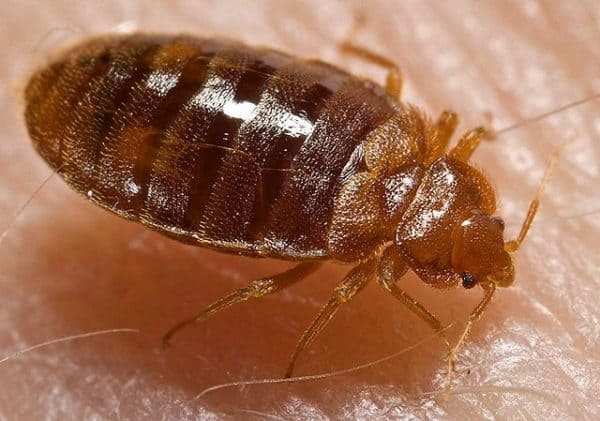Bedbugs are developing resistance to insecticides: study


A new study finds that bedbugs are developing resistance to insecticides, in part by developing thicker skins.
Researchers from the University of Sydney in Australia sprayed various groups of the pesky critters with insecticide, then separated them into groups (the ‘intolerant’, the ‘tolerant’ and the ‘resistant’) and measured the bugs’ hard outer layer or cuticle to see if a correlation was present between cuticle thickness and spray resistance.
There was.
“The most resistant bed bugs were found to have cuticle thickness 16% greater than the least resistant (‘intolerant’) bugs and 6.5% from the intermediately resistant (‘tolerant’) bugs,” reported the study’s authors.
Like other insects, bedbugs have developed a number of ways to outsmart us humans and our attempts at eradicating them, either by developing a metabolic resistance to a given chemical insecticide, by absorbing and “trapping” insecticide molecules with the insect’s own binding proteins and lipids or by developing a thicker cuticle to keep out the chemical (or a combination of all of these). And with the resurgence of bedbug infestations over the past two decades, scientists have put a lot of effort into figuring out how exactly this resurgence has occurred.
Recently, it was determined that bedbugs have developed resistance to the most widely used class of insecticides called neonicotinoids. Here, though, is the first clear evidence that the thicker cuticle is allowing the bugs to resist chemical sprays and live to breed another day.sing a method appropriately called the ‘knockdown bioassay’, researchers placed nine-day old bed bugs onto a surface treated with insecticide and recorded how long it took the bugs to right themselves after being flipped on their backs. (For this experiment, the bugs that were knocked down within the first two hours were labelled intolerant, those lasting between two and four hours were called tolerant and the champions at four hours or more were given the resistant tag.)
“[This research] may help to explain why failures in the control of field infestations are so common, and further emphasizes the need for an integrated approach in the control of bed bugs to prevent the further spread of highly resistant insects,” say the study’s authors.
Bedbugs are small, wingless insects that feed from the blood of animals (including people). They can live up to a year and a half between feedings and one female’s eggs can contaminate an entire building with bugs. Bedbugs can range in size between 1.5 mm and 10 mm. Their bites may be itchy and appear red, while for some people no visible reaction occurs. A common problem in the past, the use of DDT and other chemicals in the mid-20th century led to a reduction in their numbers, but now the bugs are back in record numbers worldwide.
In Canada, many urban centres have been hit hard by bedbugs over the past decade. This week in response to growing criticism the province of Nova Scotia announced it would earmark $1.6 million towards the bedbug problem in its public housing.
The study of bedbugs developing resistance to insecticides was published in the science journal.
Below: Worst Bed Bug Infestation Ever!

